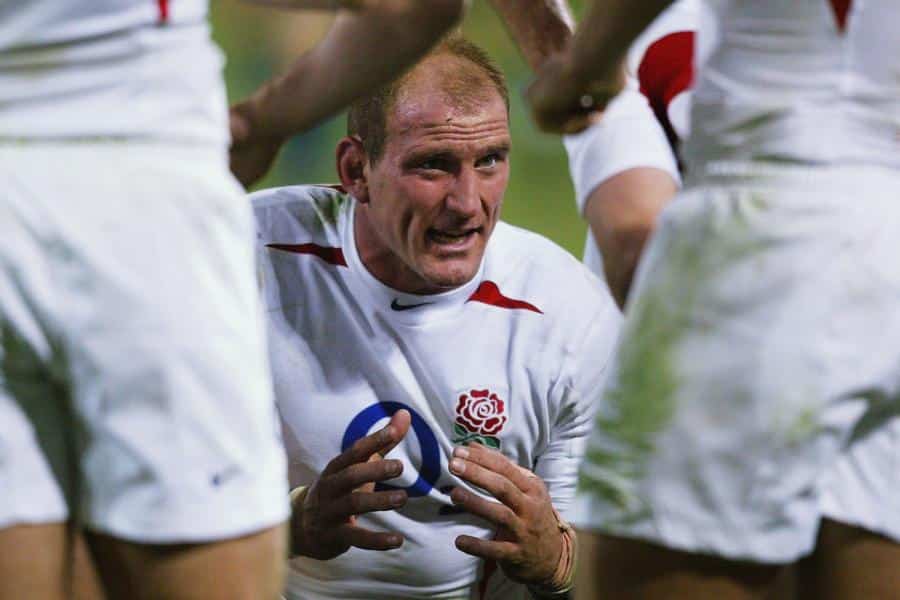Dan Carter, the renowned fly-half from New Zealand, has embraced his post-playing life with great enthusiasm and is thoroughly enjoying it. His remarkable kicking accuracy, playmaking ability, and overall skill set made him a true game-changer for his country.
Since retiring, Carter has actively engaged in charitable endeavors, making a significant impact on the lives of others. Last year, he demonstrated his commitment to giving back by completing a remarkable 24-hour kickathon at Eden Park.
This incredible feat raised an impressive $500,000, which was directed towards providing clean water and sanitation for children in the Pacific region.
In addition to his work with clean water initiatives, Carter has gone on to establish the DC10 Fund in collaboration with UNICEF. The primary goal of this fund is to empower children worldwide, encouraging them to dream big and achieve their aspirations. Through this initiative, UNICEF’s essential work in protecting children’s rights and fostering their development is supported both in New Zealand and across the globe.
Carter’s dedication to youth development and community engagement is evident from the creation of the iSport foundation in 2009. Alongside fellow rugby legends Richie McCaw and Ali Williams, he launched this foundation to provide support and opportunities to New Zealand’s youth through sports.
He has also released a new book, and it’s not about rugby this time.
The Art of Winning, which the former fly-half has been working on over the last two years, comes as Carter deals with transitioning from professional athlete to retiree.
In an interview with Seven Sharp’s Hilary Barry, Carter said that he’s always had a winning mentality, which has made his new life a significant change.
“Rugby’s been such a big part of my life. I’ve been playing since I was six years old.
“And then to commit to not playing anymore, and trying to figure out what’s next.”
Carter said that after he finished playing, he struggled to figure out what his identity was.
“If I’m not Dan Carter, the rugby player, then who am I?”
With his incredible legacy as a rugby player and his impactful work in the realm of charity and child advocacy, Dan Carter continues to leave a lasting positive influence on society, both in his homeland and internationally.
30 greatest rugby players of the professional era ranked, Jonny Wilkinson ranked 10th
Warning: the following article will annoy you. The following article will trigger you. The following will make you think ‘how in under God did he get this SO wrong? This is ridiculous!!!!!’
But maybe, just maybe, it’s not SO wrong.
Maybe this list ranking the 30 greatest rugby players of the professional era is actually 100% correct.
But before you angrily tweet us or angrily WhatsApp your friends your disgust, please bear the aforementioned in mind and TRY (all I’m asking is you try) and enjoy reading Wales Online’s ranking from back in 2018.
Best rugby players (professional era
30 Jason Robinson (England)
Known as Billy Whizz, this former rugby league star proved a hugely successful convert to Union. A lethal runner from full-back or wing, he was a nightmare to mark in one-on-one situations.
They said: “Known as Billy Whizz, this former rugby league star proved a hugely successful convert to Union. A lethal runner from full-back or wing, he was a nightmare to mark in one-on-one situations.”
29 George Smith (Australia)
Renowned for his skills at the breakdown, George Smith was a master of turnovers and a tireless worker on the field. His tenacity and rugby intelligence made him a valuable asset for Australia.
28 Alun Wyn Jones (Wales)
A true leader and embodiment of Welsh rugby, Alun Wyn Jones has been a towering presence in the second row. With his physicality, work rate, and immense passion, he has achieved numerous accolades.”

27 Sam Warburton (Wales)
Sam Warburton captained Wales and the British and Irish Lions with distinction. His athleticism, poise, and ability to win turnovers made him one of the finest openside flankers of his generation.
26 Doug Howlett (New Zealand)
As a former New Zealand rugby star, Doug Howlett was a prolific try-scorer. His speed, agility, and finishing ability made him a constant threat on the wing for both club and country.
25 Stephen Larkham (Australia)
Stephen Larkham was a gifted playmaker who orchestrated attacks with his vision and passing skills. His ability to read the game and create opportunities set him apart as a top-class fly-half.
24 Gethin Jenkins (Wales)
Gethin Jenkins was a formidable prop known for his scrummaging prowess and work rate around the field. His durability and consistency made him a vital asset to the Welsh and British Lions.
Get your tickets for the 2023 Rugby World Cup at viagogo, the world’s leading ticket marketplace.
23 Richard Hill (England)
Richard Hill was a versatile back-row forward who excelled in both defense and attack. His commitment, reliability, and selflessness earned him plaudits as a vital contributor to England’s success.
They said: “Did all the unseen, grafting work and just got on with his job in unassuming fashion, putting his body on the line. Able to excel right across the back row, he was a pivotal figure on two Lions trips and an England World Cup winner.”
22 Schalk Burger (South Africa)
Schalk Burger was a dynamic and physical flanker, always putting his body on the line. His ferocious tackling and ability to turn over ball made him a feared competitor in the back row.
21 Lawrence Dallaglio (England)
Lawrence Dallaglio was a powerful number eight who led by example. His leadership qualities, ball-carrying ability, and never-say-die attitude made him an integral part of successful teams.
They said: “Had it all in his prime – pace, power, aggression, pride and a steely mind-set. A Lions series winner, a World Cup winner and a trophy magnet with Wasps.”

